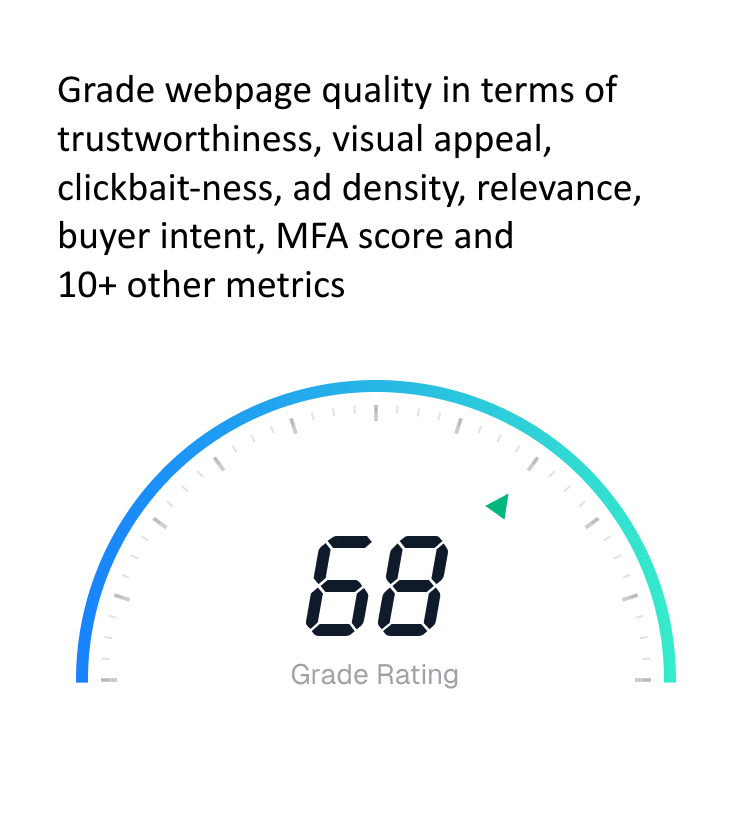The Evolving Threat Landscape
Cyber threats grow more sophisticated daily. Attackers leverage the web's openness, launching thousands of new malicious domains hourly, evolving phishing techniques to bypass traditional defenses, and exploiting zero-day vulnerabilities before security vendors update signatures. In 2024 alone, organizations faced over 4,000 cyberattacks daily, costing businesses an average of $4.45 million per breach.
Traditional security approaches—signature-based antivirus, static blocklists, and periodic threat intelligence updates—struggle against the pace and creativity of modern attacks. The time between threat emergence and signature update creates windows of vulnerability attackers actively exploit.
Critical Security Challenges
Phishing Evolution: Phishing attacks have grown exponentially sophisticated. Attackers create convincing brand impersonations, use legitimate cloud infrastructure to host attacks, and leverage social engineering psychology. Traditional email filtering catches obvious attempts but misses nuanced, targeted attacks. 91% of successful breaches begin with phishing.
Zero-Day Windows: New malicious domains launch constantly. Traditional blocklist approaches require someone to identify, report, analyze, and distribute threat intelligence—creating critical delays. During this window, users remain vulnerable to emerging threats.
Cloud Service Abuse: Attackers exploit legitimate cloud services to host phishing pages and malware, making detection harder. Security tools must distinguish malicious content from legitimate cloud service usage.
Compromised Legitimate Sites: Attackers increasingly compromise legitimate websites, injecting malicious code into trusted domains. Users and security systems trust these domains, making detection more challenging.
Social Engineering Sophistication: Modern attacks leverage psychological manipulation, current events, and personalized information, making them highly effective against even security-aware users.
The Cost of Security Failures
- Financial Impact: Average data breach costs $4.45M, with ransomware attacks averaging $1.85M in ransom plus recovery costs
- Operational Disruption: Breaches cause average 287 days of business disruption during detection and recovery
- Reputation Damage: 83% of consumers lose trust in organizations after breaches, impacting long-term revenue
- Regulatory Penalties: GDPR, CCPA, and industry regulations impose millions in fines for security failures
- Intellectual Property: 43% of breaches target intellectual property, causing competitive disadvantage and innovation loss

How Our API Enhances Cybersecurity
1. Real-Time Threat Identification
Our API analyzes URLs in real-time before users access them, identifying threats through multiple detection methods:
- Malware Detection: Identify sites distributing malware, exploits, and malicious software through content and behavioral analysis
- Phishing Identification: Detect phishing attempts through brand impersonation analysis, domain reputation assessment, and content pattern matching
- Social Engineering Detection: Identify social engineering tactics, deceptive practices, and manipulation attempts
- Exploit Kit Identification: Recognize patterns indicating exploit kit deployment and automated attack infrastructure
- Command & Control Detection: Identify botnet command and control servers through behavioral and structural analysis
2. Context-Aware Analysis
Beyond binary threat detection, our API provides context enabling intelligent security decisions:
- Risk Scoring: Assign risk scores from 0-100 based on multiple threat indicators, enabling risk-based policies
- Category Classification: Identify site categories for policy-based blocking—gambling, adult content, illegal drugs, etc.
- Content Quality Assessment: Evaluate site professionalism and trustworthiness as security indicators
- Reputation Scoring: Leverage historical data from 30M+ classified domains for instant reputation assessment
- Behavioral Patterns: Detect suspicious behavioral patterns indicating compromised sites or attack infrastructure
3. Multi-Layer Defense Integration
Our API integrates with existing security infrastructure as an additional defense layer:
- Web proxy and gateway integration for inline URL filtering
- DNS filtering integration for network-level protection
- SIEM platform integration for threat intelligence enrichment
- Endpoint security integration for device-level protection
- Email security integration for link scanning and attachment analysis
4. Threat Intelligence Platform
Beyond real-time protection, our API serves as threat intelligence source:
- Historical threat data for trend analysis and pattern recognition
- Emerging threat identification through classification of new domains
- Attack campaign tracking through related domain clustering
- Indicator of Compromise (IoC) enrichment with context and categorization
- Threat actor infrastructure mapping through domain relationship analysis
Threat Detection Performance
Protecting organizations worldwide
Detection Accuracy
Analysis Time
Real-Time Protection
Threat Database
Key Security Applications
Web Filtering & Gateways
Power secure web gateways and proxy solutions with real-time threat detection, blocking malicious sites before users connect and preventing data exfiltration.
Email Security
Scan links in emails and attachments for phishing and malware threats, protecting users from the most common breach vector with intelligent URL analysis.
DNS Security
Integrate with DNS servers to block malicious domain resolution, preventing connections to command-and-control servers, phishing sites, and malware distribution points.
SIEM Enhancement
Enrich security events with URL categorization and threat intelligence, enabling faster incident response and more accurate threat prioritization.
Endpoint Protection
Protect devices with real-time URL analysis at the endpoint level, ensuring security even when users are off-network or using VPNs.
Threat Hunting
Support proactive threat hunting with comprehensive domain intelligence, helping security teams identify compromised systems and attack campaigns.
Enterprise Security Use Cases
Zero Trust Architecture: Our API supports zero trust implementation by providing continuous URL risk assessment. Before granting access to web resources, verify URL reputation and risk scores, implementing least-privilege web access policies based on comprehensive threat intelligence.
Incident Response: During security incidents, rapidly analyze suspicious URLs in logs, emails, and network traffic. Our API provides instant threat assessment and categorization, accelerating investigation and enabling faster containment decisions.
Forensic Analysis: Security teams use our API for post-incident forensics, analyzing historical URLs from breach timelines to understand attack vectors, identify patient zero, and map attacker infrastructure for attribution and defense improvement.
Threat Intelligence Enrichment: Enrich existing threat intelligence with our categorization and analysis. Transform raw IoCs into actionable intelligence with context about threat type, sophistication, and campaign associations.

Advanced Threat Detection
Phishing Detection Capabilities
Our AI-powered phishing detection analyzes multiple signals:
- Brand Impersonation: Identify attempts to impersonate legitimate brands through visual similarity, domain name analysis, and content structure comparison
- Domain Age & Registration: Flag newly registered domains commonly used in phishing campaigns, analyzing registration patterns and hosting infrastructure
- SSL Certificate Analysis: Evaluate certificate validity, issuer reputation, and suspicious certificate patterns often indicating phishing
- Content Analysis: Detect phishing language patterns, urgency manipulation, credential harvesting forms, and social engineering tactics
- Behavioral Indicators: Identify suspicious redirects, URL obfuscation, and technical patterns common in phishing infrastructure
Malware Distribution Detection
Identify malware distribution points through comprehensive analysis:
- File hosting and download pattern analysis indicating malware distribution
- Drive-by download detection through content and script analysis
- Exploit kit identification through technical signature recognition
- Malicious advertising (malvertising) detection through ad network analysis
- Watering hole attack identification through compromised legitimate site detection
Command & Control Detection
Identify botnet and malware command and control infrastructure:
- Recognize C2 server patterns through behavioral analysis
- Identify DGA (Domain Generation Algorithm) domains through pattern matching
- Detect covert communication channels hidden in legitimate services
- Track malware family infrastructure through domain clustering
- Identify fast-flux networks used in botnet operations
Advanced Persistent Threat (APT) Intelligence
Support APT detection and tracking:
- Identify infrastructure associated with known APT groups
- Detect targeted attack patterns and campaigns
- Track threat actor infrastructure evolution over time
- Correlate domain patterns with threat actor tactics
Integration with Security Ecosystem
SIEM & SOC Integration
Enhance Security Operations Centers with our threat intelligence:
- Real-time URL enrichment for security alerts and events
- Automated threat prioritization based on risk scores
- Playbook automation for common threat responses
- Investigation acceleration through instant domain analysis
- Historical analysis for trend identification and hunting
Firewall & Network Security
Integrate with network security infrastructure:
- Next-generation firewall threat feed integration
- Intrusion Prevention System (IPS) rule enhancement
- Network Access Control (NAC) policy enforcement
- Virtual Private Network (VPN) security policy integration
- Network monitoring tool threat correlation
Cloud Security Integration
Protect cloud environments and SaaS applications:
- Cloud Access Security Broker (CASB) integration for SaaS protection
- Cloud workload protection platform integration
- API gateway security enhancement
- Container security scanning for base image verification
- Serverless function URL security validation
Compliance & Regulatory Support
Industry Compliance
Support compliance requirements across industries:
- PCI DSS: Meet requirement 6.6 for web application protection and malicious access prevention
- HIPAA: Implement required safeguards against malicious software and unauthorized access to ePHI
- SOC 2: Demonstrate security controls and threat detection capabilities for audit requirements
- ISO 27001: Support information security management system requirements for threat monitoring
- NIST Framework: Implement Identify, Protect, Detect functions through comprehensive threat intelligence
ROI & Security Value
Breach Prevention Value
- Reduce successful phishing attacks by 80-95% through real-time detection
- Block 99%+ of malware infections from web-based distribution
- Prevent data exfiltration through C2 traffic blocking
- Avoid average breach cost of $4.45M through proactive defense
Operational Efficiency
- Reduce security analyst workload by 60-80% through automated threat classification
- Accelerate incident response by 50-70% with instant URL intelligence
- Decrease false positive alerts by 40-60% through accurate categorization
- Enable security team scalability without proportional headcount growth
Strategic Security Improvements
- Shift from reactive to proactive security posture
- Build comprehensive threat intelligence program
- Enable data-driven security investment decisions
- Support zero trust architecture implementation
Strengthen Your Security Posture
Deploy AI-powered threat detection protecting users, data, and infrastructure from evolving cyber threats.
